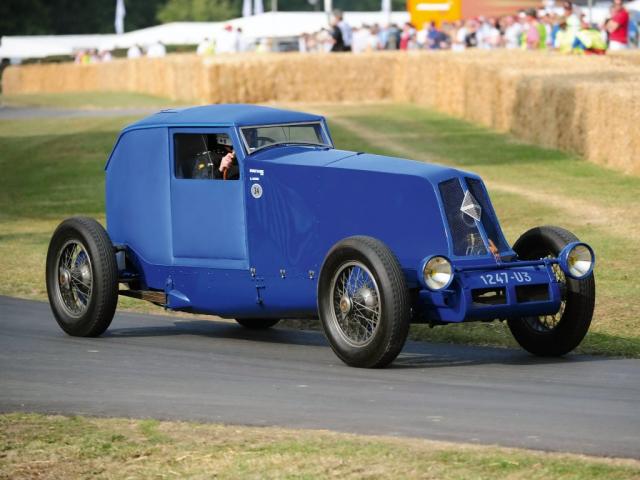1925 Renault 40 CV Type NM Race Car
- Brand: Renault
1925 Renault 40 CV Type NM Race Car
In the 1920s, vehicle manufacturers were locked in an all-out race to set new records, a fashion encouraged by the construction of speed rings. In France, the Montlhéry ring built in 1924 set the stage for many a confrontation, with the last word going to the stopwatch.
Renault was among the front-runners in this ongoing sprint. It relied primarily on its 40 CV flagship model with an enormous engine of over 9,000 cm3!
The 1st campaign involved a 40 CV Open Tourer. Almost a production model, this car set a lap record of 178.475 kph in 1925. It also set a world record with 3,384.74 km covered in 24 Hours at an average speed of 141.03 kph. The difference in speed can be explained by the many stopovers to refuel and – more particularly – to change tires, of which 1000 or more were used up by this particularly heavy vehicle!
These figures did not satisfy Plessier and Garfield, the pilots and engineers responsible for the operation. In 1926, they launched an NM Type 40 CV car on the speed ring. This single-seater model was more streamlined than its predecessor and placed the radiator behind the engine. At the same time, the 14 people responsible for fuel stops received special training. The aim was to get the job done in no more than 50 seconds. The modified vehicle went on to cover 50 miles at a speed of 190.013 kph and – above all – smashed the 24-hour record by covering 4167.57 km at an average speed of 173.649 kph!
After more than 15 years of faithful service (from the CG Type to the NM Type), the 40 CV took its retirement in 1928. It was replaced by the new executive models developed by Renault, the Vivastella and Reinastella.
Before bowing out, the 40 CV earned its sporting colors and entered the legend of motorsports as the “record-breaking 40 CV”!
Descriptions & pictures by supercars & renaultclassic & en.wheelsage & flickr & patrimoineautomobile & other
| Specification | |
| Production Start | 1925 |
| Country of origin | France |


































